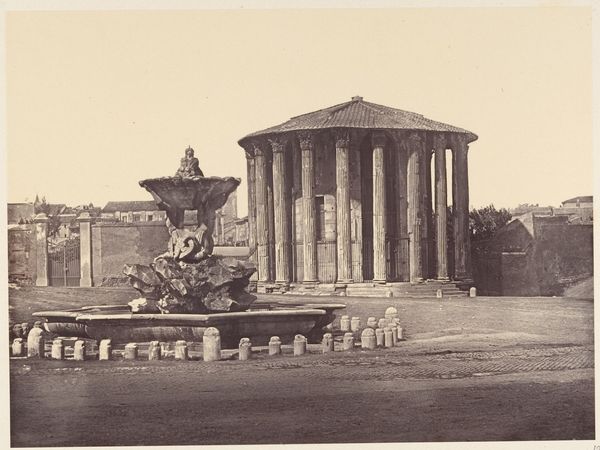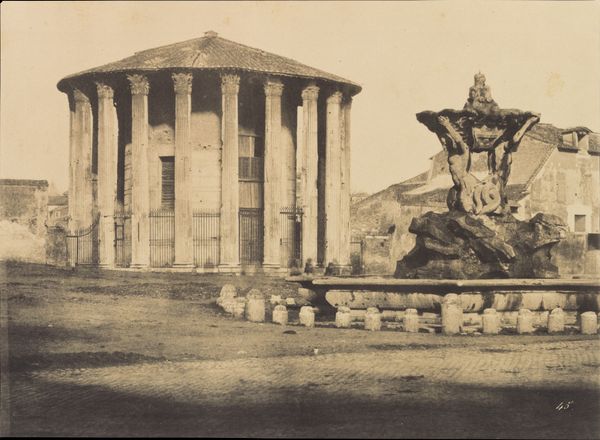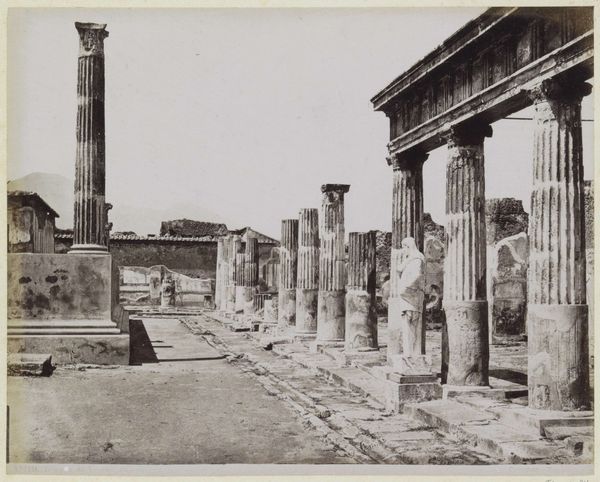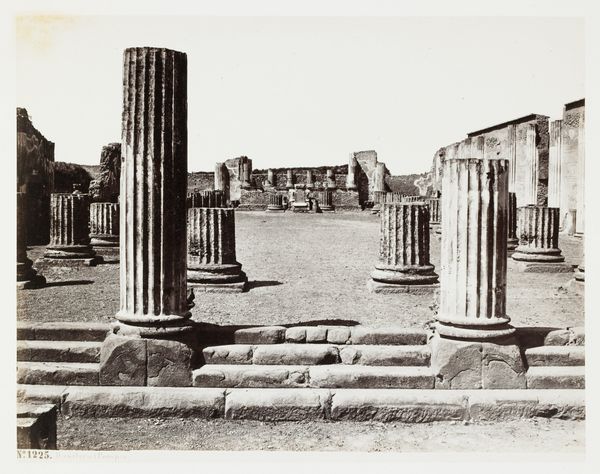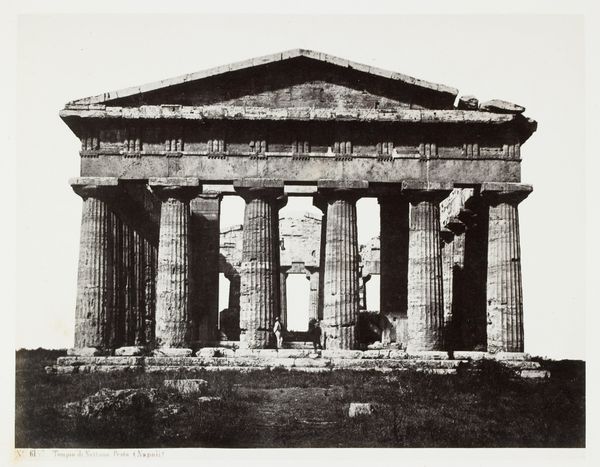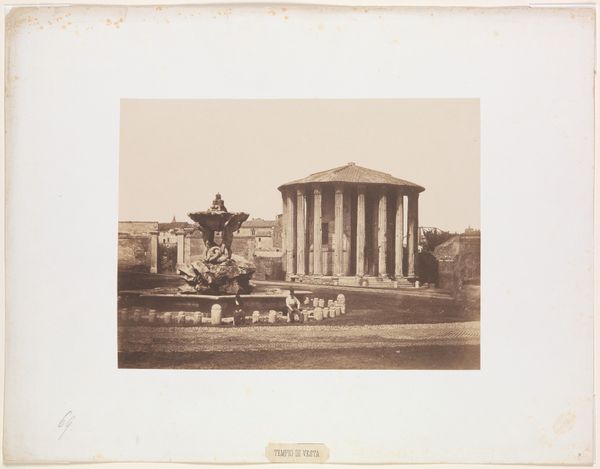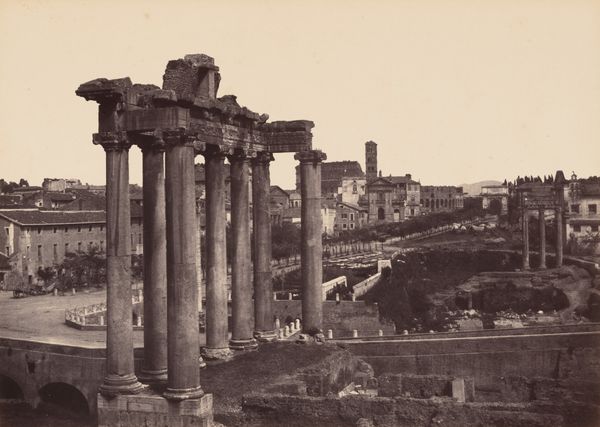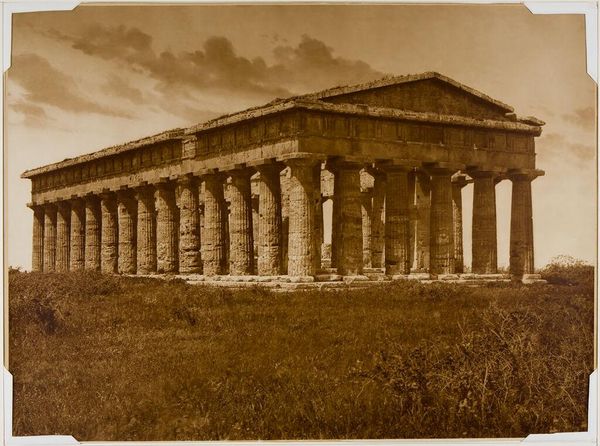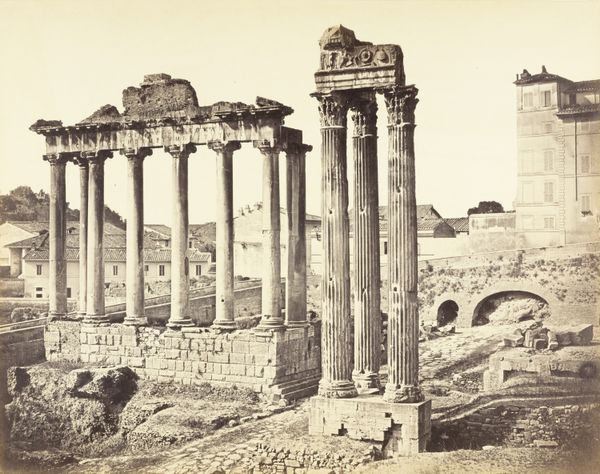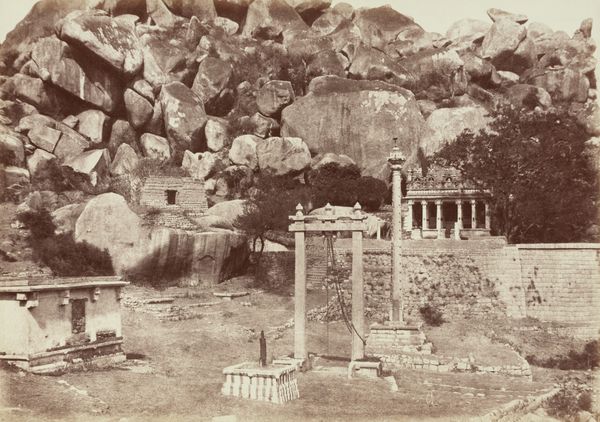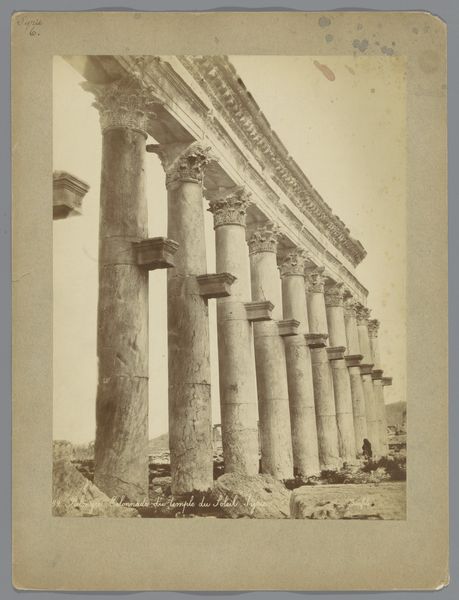
photography, site-specific, albumen-print
#
greek-and-roman-art
#
landscape
#
photography
#
classicism
#
ancient-mediterranean
#
site-specific
#
cityscape
#
albumen-print
Dimensions: image: 30.2 × 41 cm (11 7/8 × 16 1/8 in.) mount: 45.5 × 55.5 cm (17 15/16 × 21 7/8 in.)
Copyright: National Gallery of Art: CC0 1.0
Editor: This photograph, "Temple of Vesta and Fountain, Rome," was taken by James Anderson in the 1860s. It's an albumen print, and the details are amazing! There’s almost a sense of quiet grandeur in the image. What historical narratives do you think it holds? Curator: It’s tempting to simply see it as a beautiful cityscape captured through early photography, isn’t it? However, I'd say it’s more than a pretty picture, it really embodies the 19th-century Western fascination with classical antiquity, wouldn't you agree? Editor: I suppose. But how does it connect to broader socio-political themes of the time? Curator: Think about the function of museums and art institutions during this era. Photography allowed for a much wider audience to 'own' pieces of Western cultural heritage than before. This photograph of the Temple of Vesta isn't simply documenting the architecture. It becomes a way to assert cultural dominance through imagery and influence how these relics are perceived and celebrated. What feelings are stirred when we look at these powerful symbols of antiquity from today’s context? Editor: That makes so much sense! I guess I was missing the connection between access and cultural ownership, and how photography made that even more explicit. Thanks! Curator: The pleasure is all mine. This conversation is proof that images often contain far more complex narratives than first meets the eye!
Comments
No comments
Be the first to comment and join the conversation on the ultimate creative platform.
